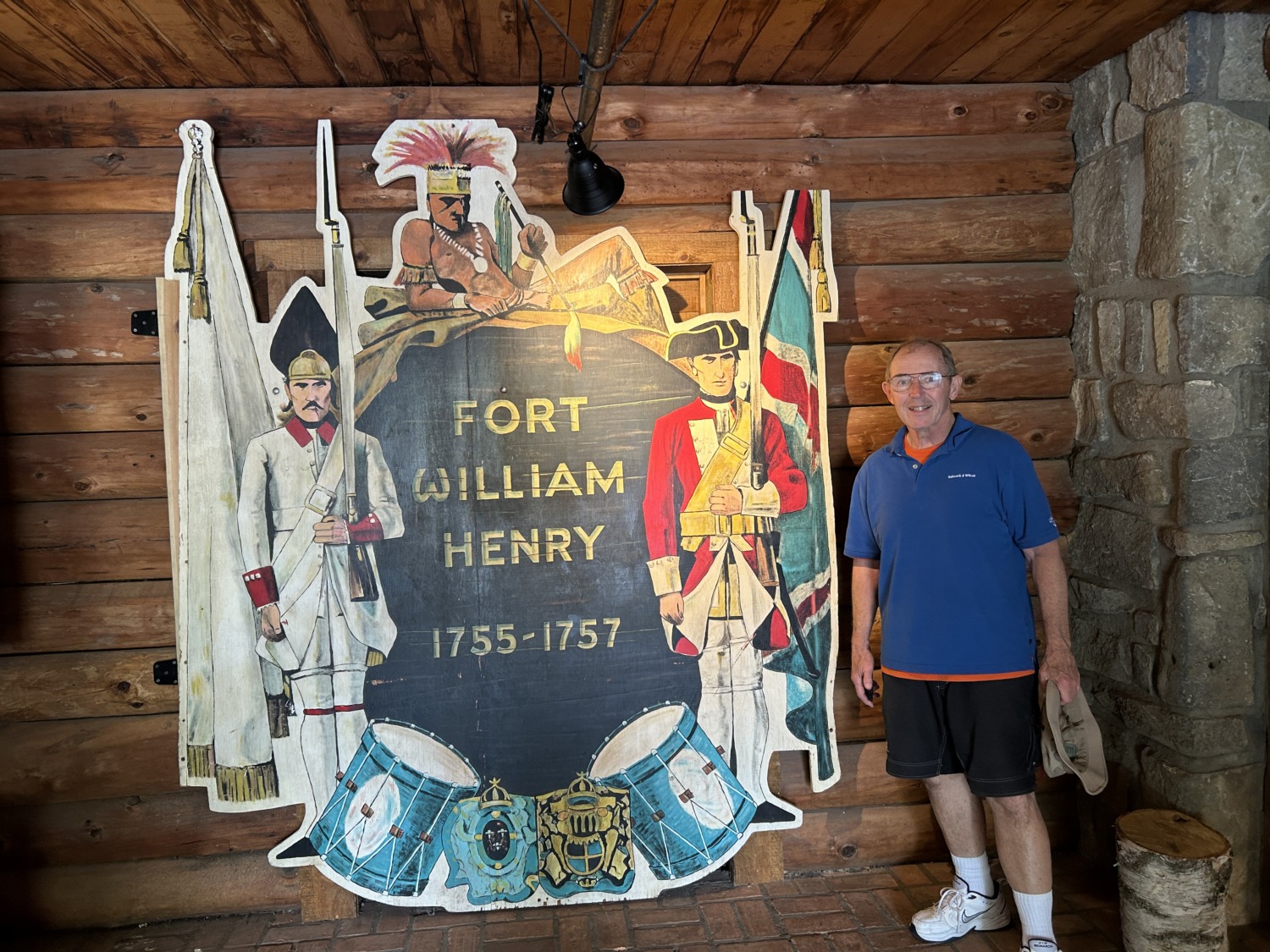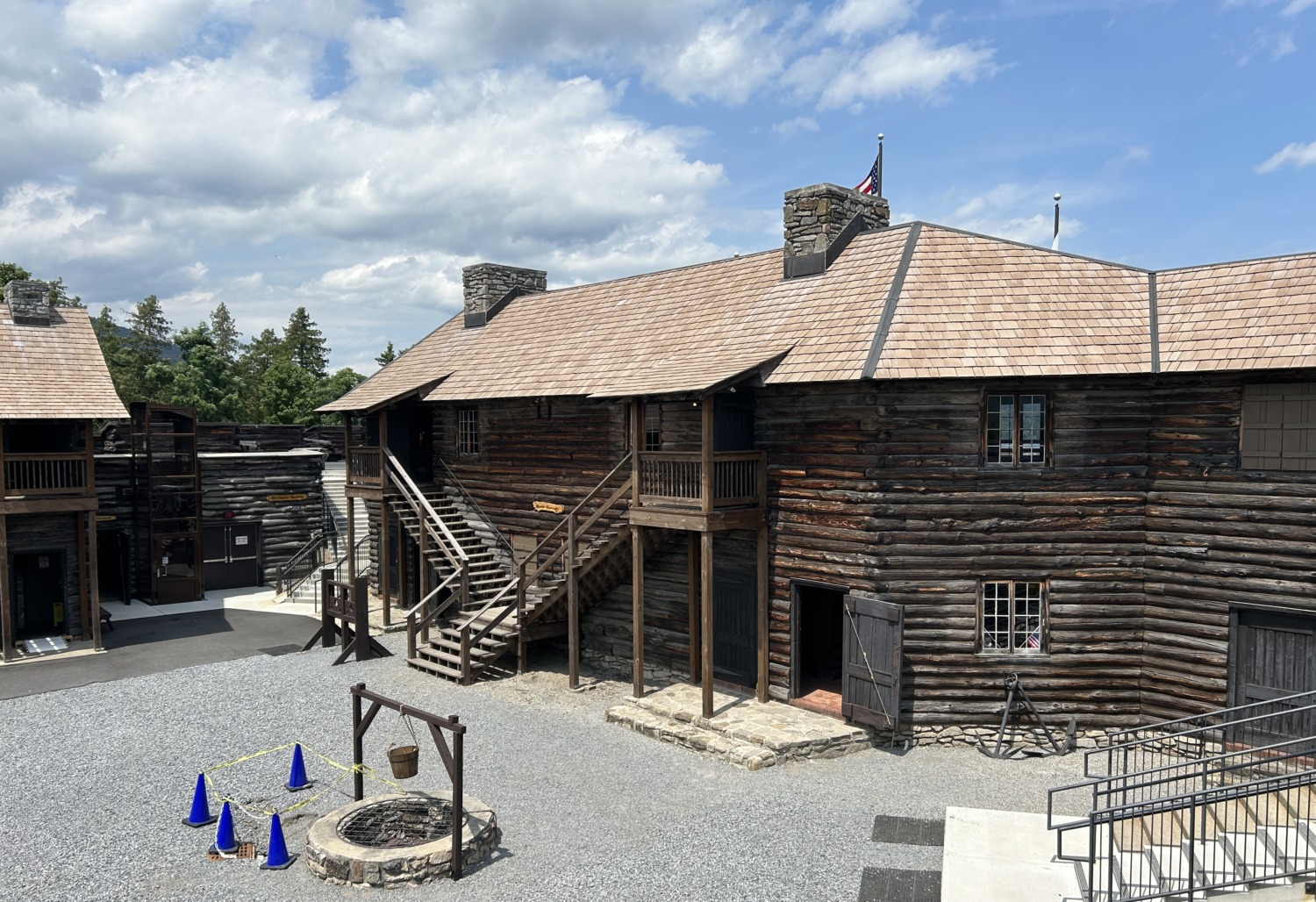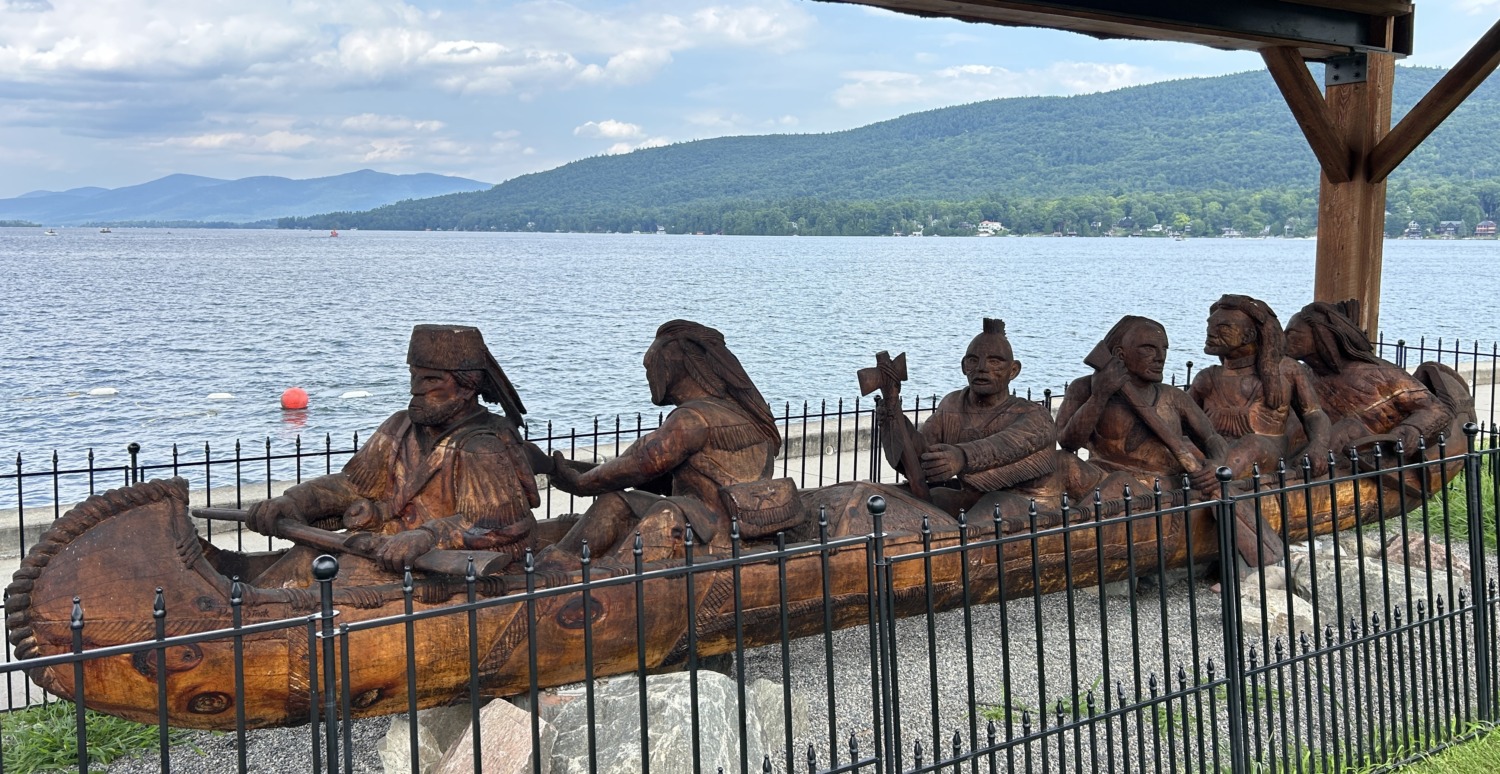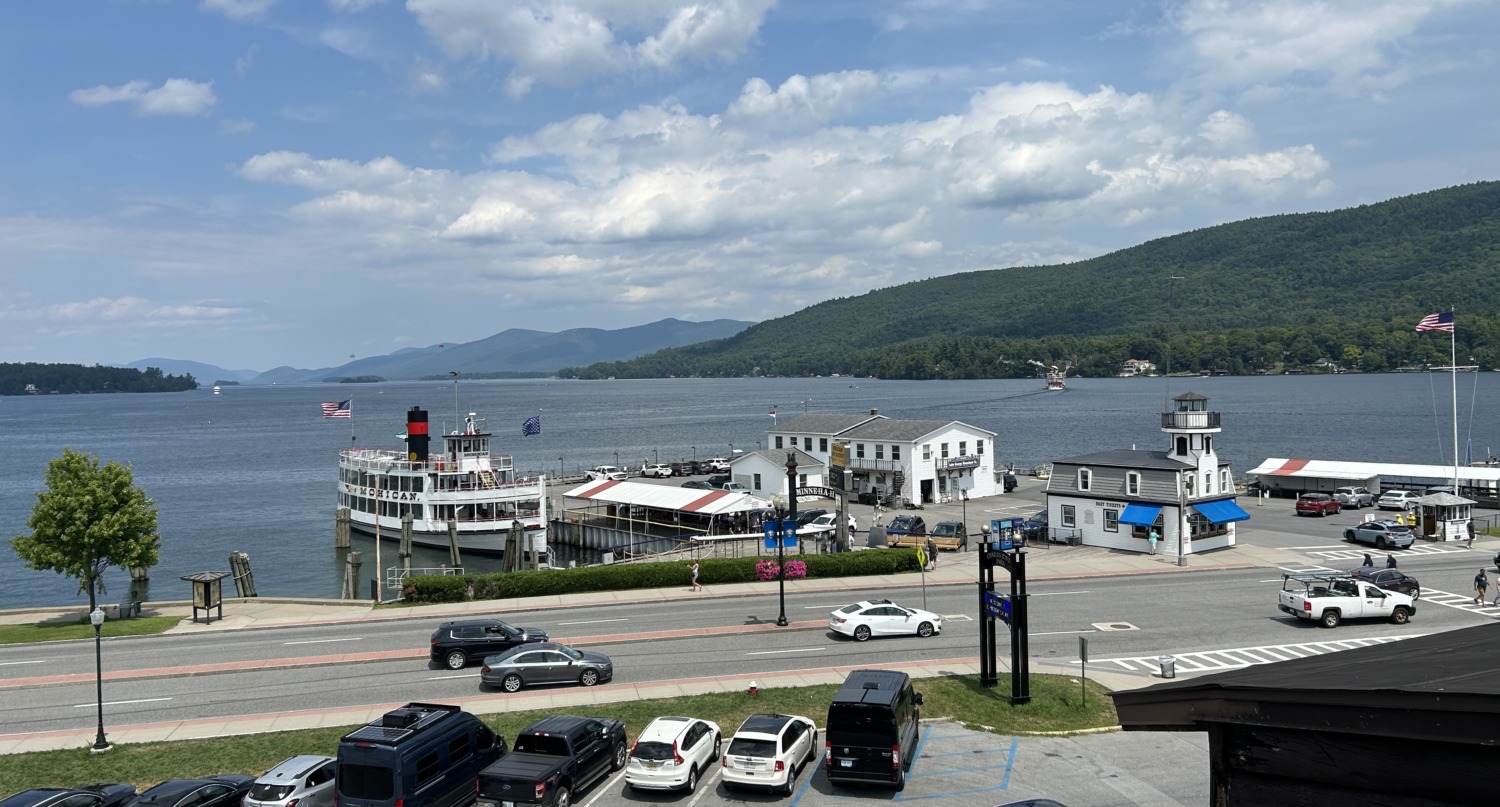The same day we visited Saratoga, we also visited Fort William Henry in Lake George, New York. Our preference is to visit National Park Service sites, but the NPS can’t take care of every historic site. The NPS has rules about what they can and can’t do. For instance, they can’t build a reconstruction unless they have exact plans. Sometimes state parks or state historic sites take up the slack, such as Wilderness Road State Park in Virginia. Other places are preserved through private groups. Fort Ligonier in Pennsylvania is a good example of a privately run park. The private places tend to be pricey to get in, but are usually well staffed as a result.
Fort William Henry is a historic site run by a private organization. It preserves the history of the forts built around the Finger Lakes area during the French and Indian War. Fort William Henry was built by the British in 1755 to protect against the French on the north side of Lake George. It was only used for two years during the French and Indian War. The fort followed the star-shaped Vauban style with log facings and an earthen filling making its walls 30 feet thick. It was surrounded on three sides by a dry moat and on the fourth was a hill sloping down to the lake. It could house 400-500 men.
In July 1757 word came that the French were mobilized to attack the fort. Lieutenant Colonel George Monro commanded 2,300 men at Fort William Henry. The French forces under General Louis-Joseph de Montcalm besieged the fort on August 3, 1757. Montcalm’s forces totaled over 3,000 French regulars, 3,000 militia, and approximately 2,000 Native Americans. Over the next few days, the French moved their heavy guns to within 150 yards of the northwest bastion. Meanwhile, many of the fort’s guns had exploded due to overuse. After six days and General Webb’s refusal to send re-enforcement from Fort Edward, Monro surrendered on August 9, 1757.
The terms of surrender were generous and allowed the British to return to Fort Edward with the full honors of war. Montcalm attempted to communicate these terms to his Native American allies but not all understood. The Native allies had been promised war booty as their payment for participating in the attack. Now it appeared that the French were not living up to their promises. As the British troops and camp followers began the march to Fort Edward, the column was attacked. Around 200 people were killed or wounded during the massacre that ensued. Montcalm took anything of value and burned the Fort William Henry before returning to Fort Carillon.
If this story sounds familiar, it is probably because you watched the movie, “The Last of the Mohicans.” The siege of Fort William Henry is one of the scenes of the movie. The two women in the movie were George Monro’s daughters.
Fort William Henry remained as a ruin until the 1950’s, when a group of Lake George business owners decided to restore it. They arranged for the site to be excavated and then paid for the reconstruction. The fort has been run as a tourist attraction and historical museum since that time.
Tom and I paid to enter the fort at the senior rate of $20 each. That price included a guided tour that lasted 90 minutes. Tom and I thought that was a little long, so we explored the fort on our own. It was an interesting mix of old and new – the battlements were paved in asphalt. Different rooms were staged as they would have been in 1757. There were a few living history interpreters spread out on the grounds, but most of the characters in the rooms were mannequins.
We spent some time in the museum area. There are some good artifacts from the excavations in the 1950’s. I was especially fascinated by the story of Father Isaac Jogues who was a French-born Jesuit missionary. Jogues was ordained in 1636 and spent his first six years in the Huron lands near Georgian Bay. In 1641 he began missions to the Ojibwa tribe at Sault-Ste-Marie. The following year, warring Iroquois captured him and took him to Ossernenon, New York. Jogues’s captivity lasted about 13 months, during which his hands were mutilated and he lost several fingers.
Ransomed and aided by the Dutch of nearby Fort Orange (Albany), he escaped down the Hudson River. The Dutch provided funds for him to return to France, and on Christmas of 1643 he reached his home country. Jorgues was eager to return to his missions, and in 1645–46 he was sent by the French government to Ossernenon to establish peace between the French and the Mohawk Indians. When Jogues arrived, the Mohawks accused Jogues of witchcraft and murdered him and his companion. They warned him – he should have stayed in France.
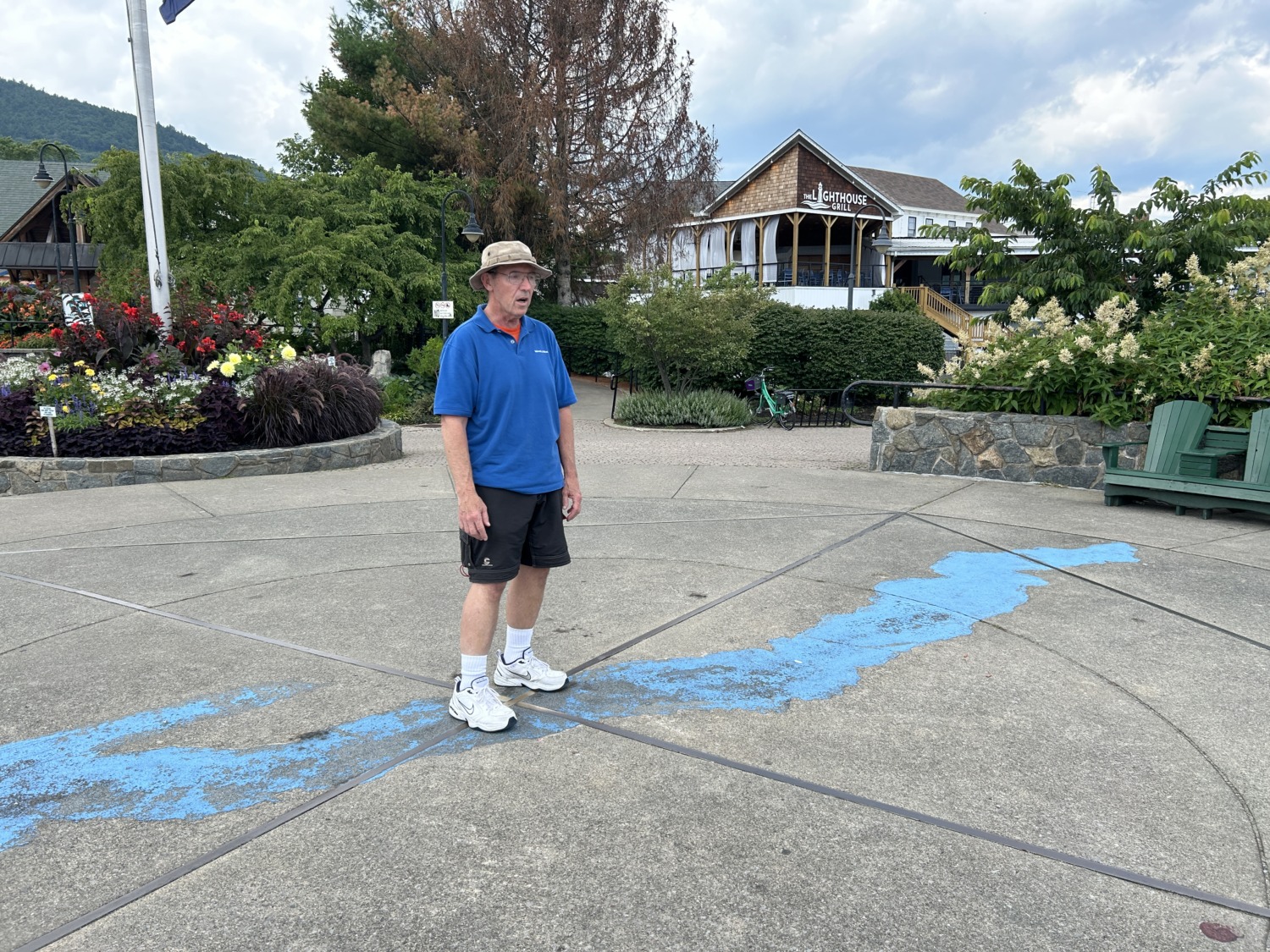
The last thing we did at Fort William Henry was check out the extensive gift and book shop. Then we walked around Lake George and did some people watching. We went to the Mystery Spot, where a “mysterious echo seems to defy the laws of acoustics.” Tom and I both stood on the X and talked, hearing the echo of our voices come back to us.
After being sufficiently mystified, we got some ice cream. Lake George is a bustling vacation town and there were plenty of people out enjoying the beautiful day. We saw three large tour boats going around the lake. There were people on the boardwalk and parasailers on the lake. Tom and I thought about playing a round of miniature golf at one of the many courses, but decided to head on to Rome, New York. We wouldn’t get there in time to visit Fort Stanwix, but we could see it first thing the next morning.
As we got close to Rome, we noticed some areas where a tornado had struck the week before. When we got to the hotel we were planning to stay at, we were told there were no rooms. Every room in town was filled with people helping to rebuild after the F2 tornado that had gone through five miles of downtown Rome. Although Tom and I knew there had been tornados in the area, we had no idea that this one was so destructive.
We had planned to go to Fort Stanwix National Monument the next day, our reason for going to Rome, but checked the website and noticed that it was closed. This was the alert on the website: “Fort Stanwix is closed due to a weather related state of emergency. Please avoid unnecessary travel throughout the City of Rome until further notice.” We had been to Fort Stanwix before, so I wasn’t too upset about missing it. Fort Stanwix is open again now.
Instead of stopping for the night in Rome, we drove on to Syracuse. Away from the tornado recovery area and that much closer to the National Park sites we wanted to see the next day.

